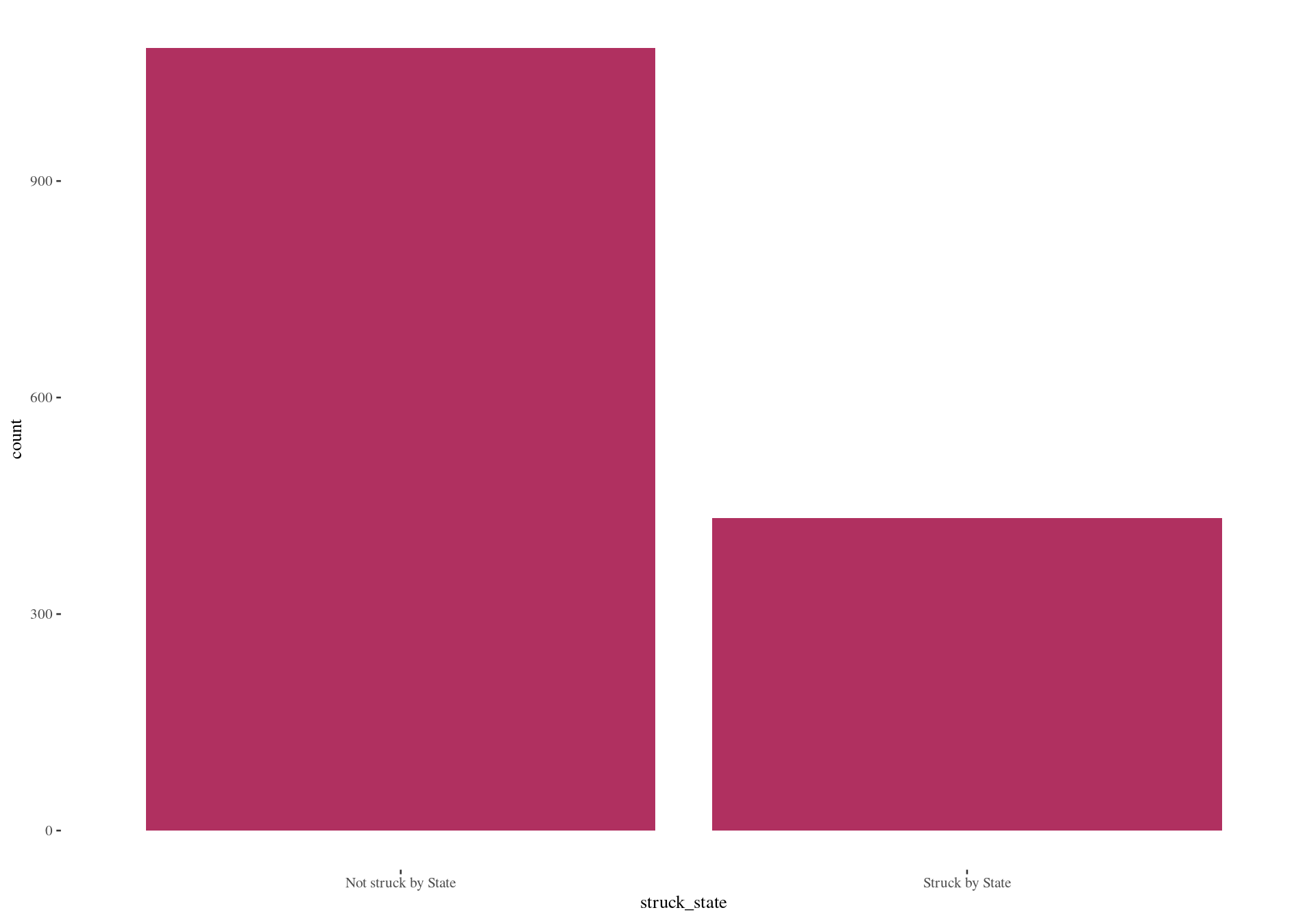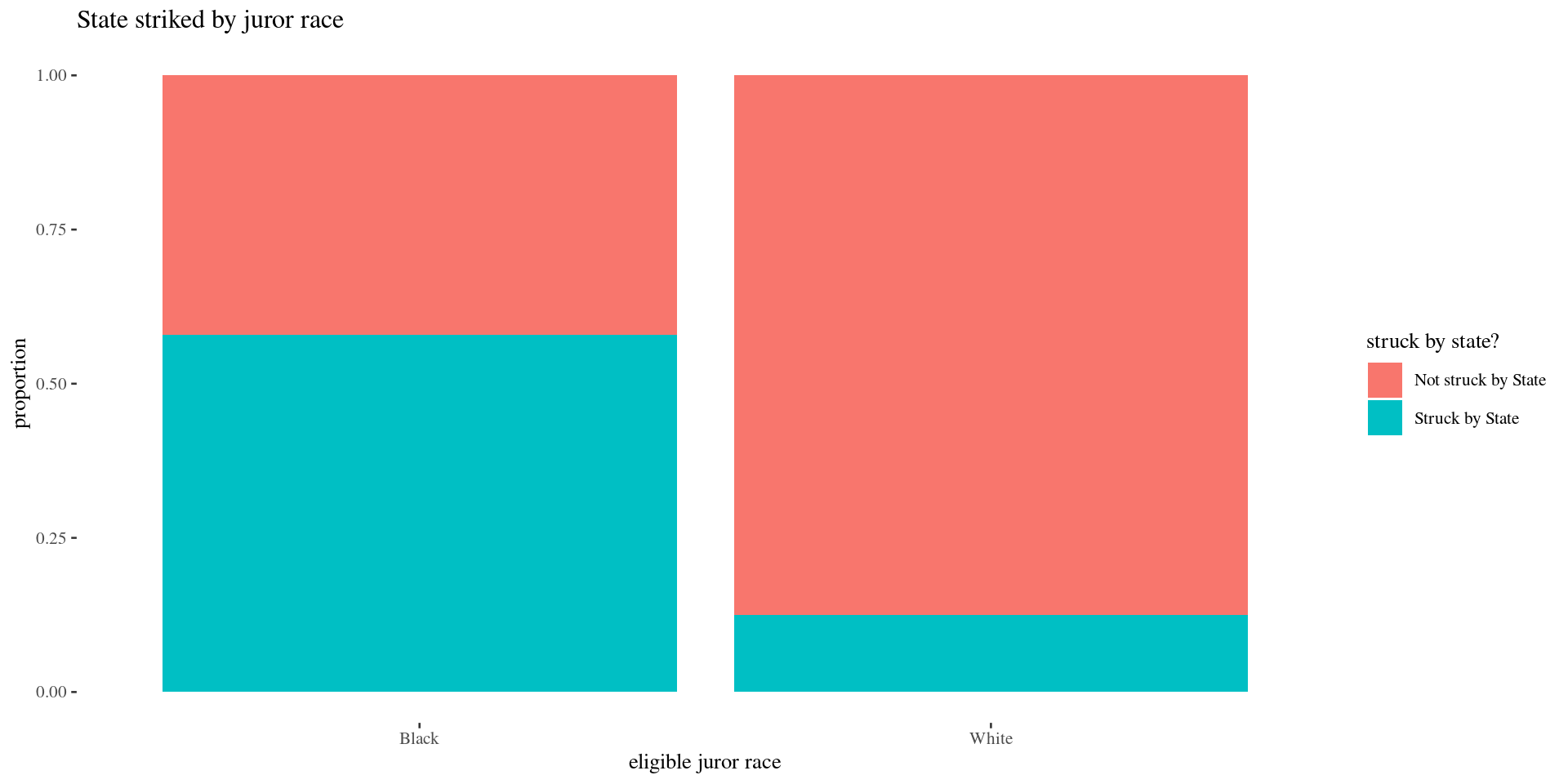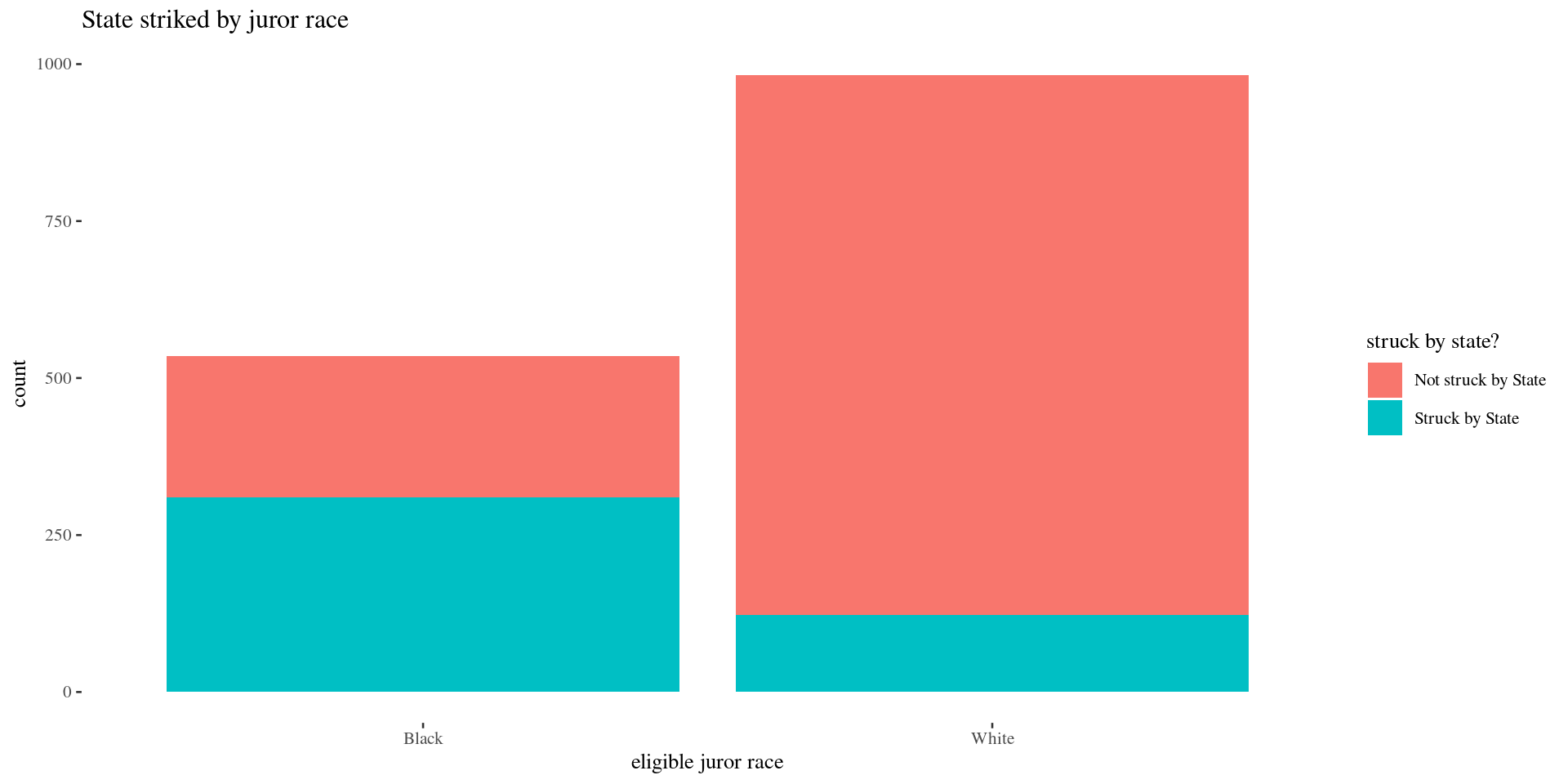[1] 0.76Describing Categorical Variables
STAT 120
Descriptive Statistics
- In order to make sense of data, we need ways to summarize and visualize it
- Summarizing and visualizing variables and relationships between two variables is often known as descriptive statistics, also known as exploratory data analysis (EDA)
- The type of summary statistics and visualization methods depend on the type of variable(s) being analyzed (categorical or quantitative)
One Categorical Variable
A random sample of US adults in 2012 were surveyed regarding the type of cell phone owned

Android? iPhone? Blackberry? Non-smartphone? No cell phone?
Frequency Table
A frequency table shows the number of cases or counts that fall in each category:
| Subset of Raw Data | Device Type |
|---|---|
| Case 1 | Android |
| Case 2 | none |
| Case 3 | none |
| Case 4 | iPhone |
| Case 5 | Non Smartphone |
| Case 6 | iPhone |
| Case 7 | Blackberry |
| Case 8 | Non Smartphone |
| Case 9 | Android |
| Case 10 | Android |
| … | (for 2253 cases …) |
| Cell Phone Type | Frequency |
|---|---|
| Android | 458 |
| iPhone | 437 |
| Blackberry | 141 |
| Non Smartphone | 924 |
| No Cell Phone | 293 |
| Total | 2253 |
Proportion
The proportion in a category is found by \[\text{proportion} = \frac{\text{number in category}}{\text{total sample size}}\]
Percentages/proportions (relative frequencies)
- \(p\) = proportion for a population (parameter)
- \(\hat{p}\) = proportion for a sample (statistic) (“p-hat”)
What proportion of adults sampled do not own a cell phone?
| Cell Phone Type | Frequency | Proportion |
|---|---|---|
| Android | 458 | 0.203 |
| iPhone | 437 | 0.194 |
| Blackberry | 141 | 0.063 |
| Non Smartphone | 924 | 0.41 |
| No Cell Phone | 293 | 0.13 |
| Total | 2253 | 1.000 |
Proportions and percentages can be used interchangeably
Distribution of a variable
The “distribution of variable Y” describes the count or percent of observations that fall into each category of “variable Y”
- E.g. In the 2020 election, 51.3% of voters voted for Biden, 46.8% for Trump and 1.8% for third-party candidates
Bar Chart/Plot/Graph
In a barplot, the height of the bar corresponds to the number of cases falling in each category

Two Categorical Variables
Look at the relationship between two categorical variables - Relationship status - Gender
| Female | Male | Total | |
|---|---|---|---|
| In a Relationship | 32 | 10 | 42 |
| It’s Complicated | 12 | 7 | 19 |
| Single | 63 | 45 | 108 |
| Total | 107 | 62 | 169 |
We add a second dimension to a frequency table to account for the second categorical variable
Relationship status and Gender
Relationship status and Gender
Proportion of males that are in a relationship?
Proportion of females that are in a relationship?
Statkey for Data Visualization: https://www.lock5stat.com/StatKey/index.html
Difference in proportions
A difference in proportions is a difference in proportions for one categorical variable calculated for different levels of the other categorical variable
- Example: Difference in proportions of male and female that are in a relationship:
Case Study: Flowers v. Mississippi
2019 Supreme Court case: Has Mississippi prosecutor Doug Evans deliberately use “peremptory challenges” to strike black jurors from jury pools?
American Public Media journalist collected trial data from this district from 1992 to 2017 Link
The data set APM_DougEvansCases.csv contains data on 1517 jurors for cases which listed Doug Evans as the first prosecutor.
- Only looking at jurors with race listed as Black or White.
- These jurors are eligible for Evans to strike.
Source: Click here
Look at the data
jurors <- read.csv("https://raw.githubusercontent.com/deepbas/statdatasets/main/APM_DougEvansCases.csv")
head(jurors) trial__id race struck_state defendant_race same_race
1 4 Black Not struck by State White different race
2 4 Black Struck by State White different race
3 4 White Not struck by State White same race
4 4 White Not struck by State White same race
5 4 Black Struck by State White different race
6 4 White Not struck by State White same race
struck_by
1 Juror chosen to serve on jury
2 Struck by the state
3 Juror chosen to serve on jury
4 Struck by the defense
5 Struck by the state
6 Juror chosen to serve on juryLook at the data
Look at the first three rows of the data set
trial__id race struck_state defendant_race same_race
1 4 Black Not struck by State White different race
2 4 Black Struck by State White different race
3 4 White Not struck by State White same race
struck_by
1 Juror chosen to serve on jury
2 Struck by the state
3 Juror chosen to serve on juryLook at the data
[1] "Not struck by State" "Struck by State" "Not struck by State"
[4] "Not struck by State" "Struck by State" "Not struck by State"
[7] "Struck by State" "Not struck by State" "Not struck by State"
[10] "Not struck by State" "Not struck by State" "Not struck by State"
[13] "Struck by State" "Not struck by State" "Not struck by State"
[16] "Not struck by State" "Struck by State" "Not struck by State"
[19] "Struck by State" "Not struck by State"Numeric summaries: counts and proportions
table() gives counts of whether the state struck a juror:
prop.table() turns these counts into proportions:
What proportion of eligible jurors were struck by the state from the jury pool?
Graphical summary: bar plot using ggplot2

Associations between two categorical variables
How does state struck status vary by juror race? (How are race and state strikes associated?)
Numerically:
- summarize counts in a contingency/two-way table
- conditional proportions: “The conditional distribution of Y given variable X” describes how Y is distributed within each category of X (group by X).
Graphically:
- stacked bar graph of conditional proportions
Two-way (contingency) table
First 6 entries of race and struck_state variable is
race struck_state
1 Black Not struck by State
2 Black Struck by State
3 White Not struck by State
4 White Not struck by State
5 Black Struck by State
6 White Not struck by Statetable gives two-way tables when two variables are included.
Conditional proportions
prop.table gives conditional proportions grouped by the row variable when margin=1
Not struck by State Struck by State
Black 0.4205607 0.5794393
White 0.8747454 0.1252546- Of all eligible black jurors, about 57.9% were struck by the state.
What proportion of eligible white jurors were struck by the state? Is there evidence of an association between juror race and state strikes?
Stacked bar graph

Stacked bar graph (counts)

Group Activity 1

- Please download the Class-Activity-4 template from moodle and go to class helper web page
20:00